 The Commonwealth Government has done a great deal in its world-leading response to COVID-19 – introducing health, social and economic support measures to spare the nation from the worst ravages of the pandemic.
The Commonwealth Government has done a great deal in its world-leading response to COVID-19 – introducing health, social and economic support measures to spare the nation from the worst ravages of the pandemic.
However, Australia now faces an extended economic downturn due to the lingering consequences of COVID-19 – a situation exaggerated by the elongated lockdown in Victoria.
The nation has now entered a recession, unemployment is forecast to peak at 10 percent, Victoria’s lockdown will drain more growth from the economy, and dwelling construction will slow significantly.
These elements are influenced in large part by the need to shut international borders and the secondary effects of closed internal borders.
Immigration is a crucial fuel for the economy with Net Overseas Migration (NOM) accounting for approximately 60 percent of population growth needed to sustain a vibrant economy, and all its elements.
It is also essential to underpin demand for new housing construction – which accounts for approximately 7.5 percent of national output, 750,000 direct and indirect jobs and over $300bn in economic output.
We can now quantify the risks to the economy from lower immigration and population growth. The Urban Development Institute of Australia (UDIA) National has partnered with Urbis to test the effects of reduced demand arising from lower NOM and population growth, and its implications for housing markets and the economy.
HomeBuilder Mark 2: UDIA Plan for an Extender HomeBuilder Scheme provides the data which will drive demand in the housing sector for the coming years, and our case and recommendations for addressing the design of the HomeBuilder scheme moving forward.

